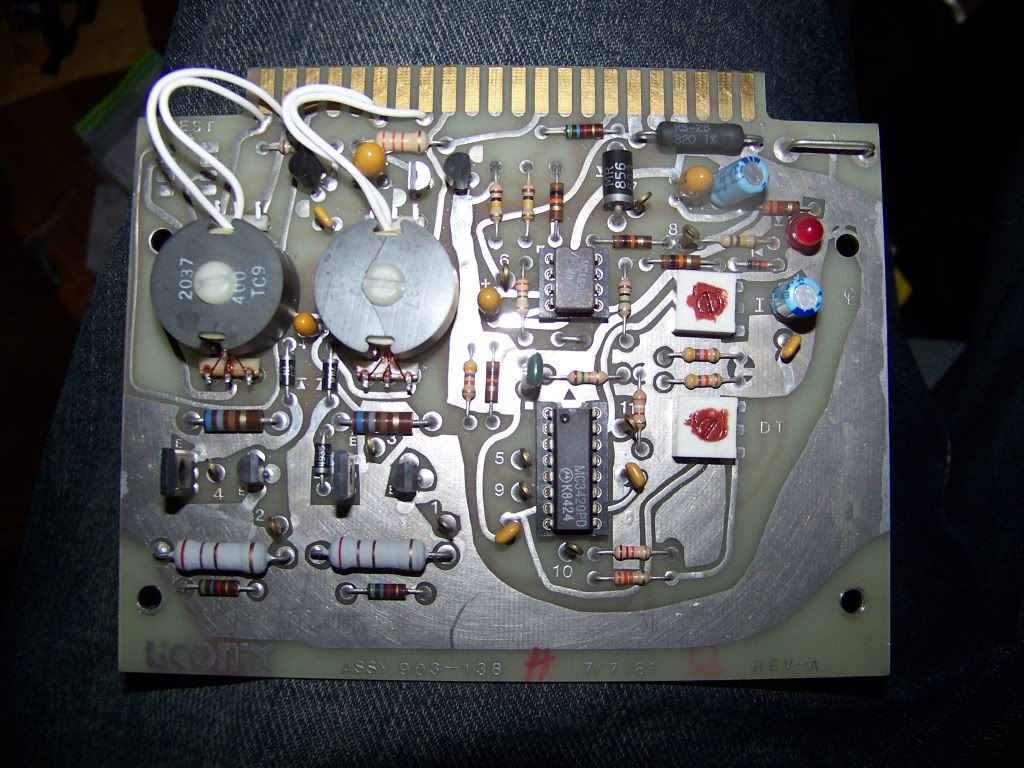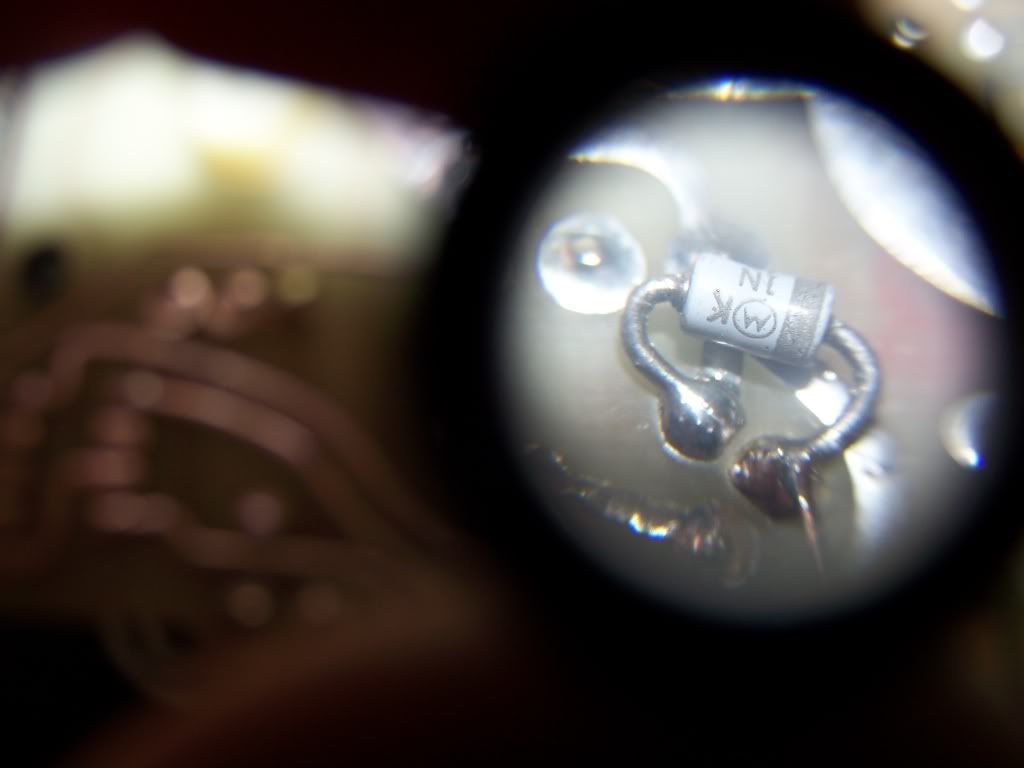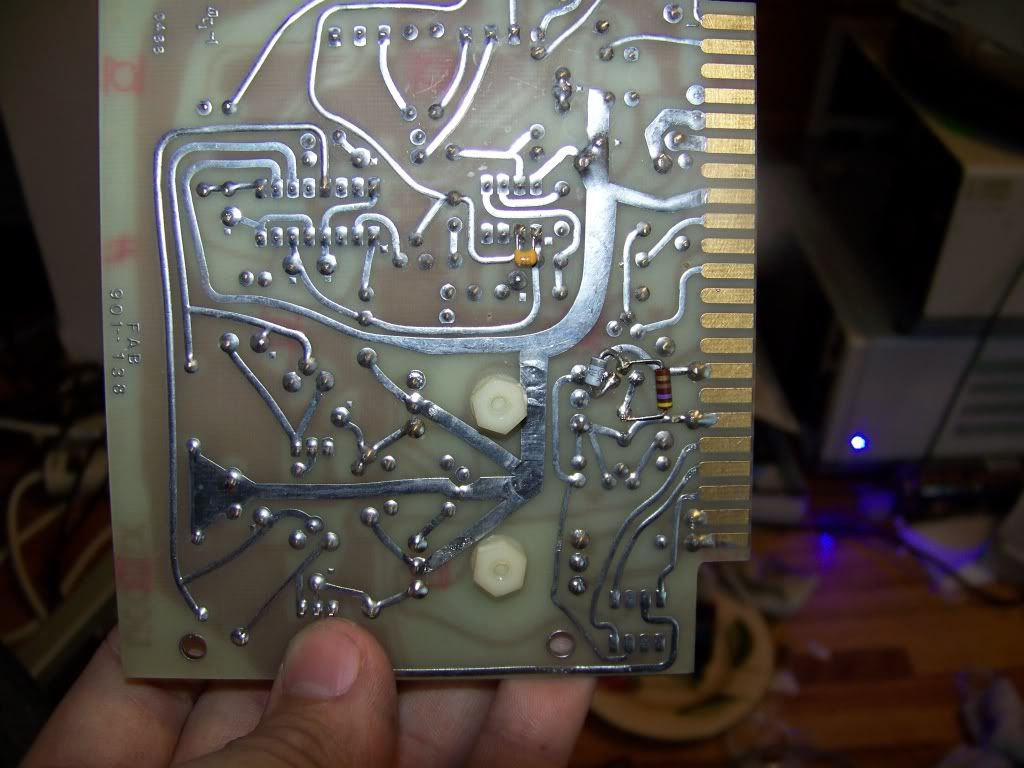So for some reason, my power supply for my HeCd laser keeps eating PWM cards... I'm thinking that the problem lies in the main 'driver' IC, which is the long IC in the picture below. Everything else on the card is pretty basic... resistors, caps, a couple little transistors. The IC is the only thing I could think of that would completely stop all function. The smaller IC is a little op-amp.
Anyway, one card failed about two months ago, I swapped it with a spare that I had and everything was fine. Then just today another one died. I swapped in the last spare that I had and it's happy again, but I would like to rebuild these two 'bad' cards that I have, just to have them around and functional in case I need them.
The design looks very simple, each card (there are two in the supply, for the two separate HV units) is tied to a pair of power transistors which then power the HV module.
Does this IC seem like the most likely component to fail?
Any of you electronics gurus have any tips? The ICs are still being made (scratch that... no longer made but I found a couple for $2ea) and they are socketed so changing them will be very easy.
There are no symptoms, it will work flawlessly one day and the next day one side of the PSU just wont work. Sometimes after that it will decide to randomly work, but that's rare.
Here's the board:




 Reply With Quote
Reply With Quote






